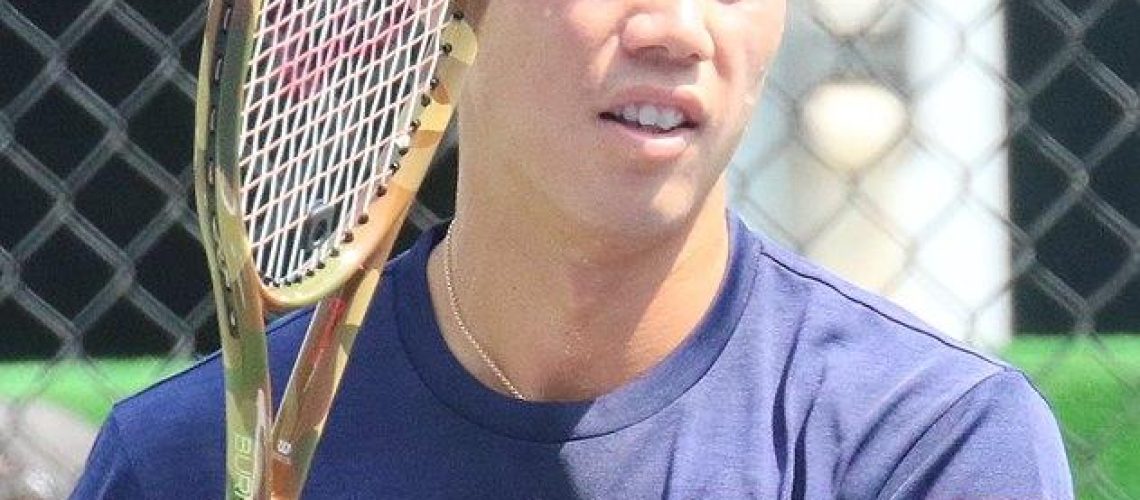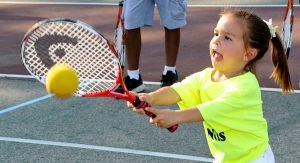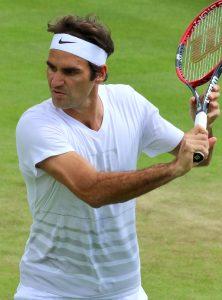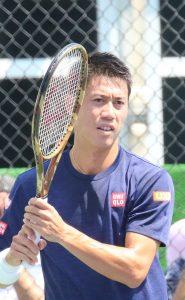We may earn money or products from the companies mentioned in this post.
Introduction

Tennis, often referred to as the “sport of a lifetime,” has captivated individuals of all ages and backgrounds Its unique combination of physicality, mental agility, and social engagement make it an ideal activity for those seeking a well-rounded experience In this article, we will explore why tennis is such a popular choice and the challenges one may encounter when trying to learn the game quickly
Why Tennis?
1 Physical benefits
Tennis is a sport that demands physical fitness on multiple levels The constant movement on the court helps improve cardiovascular endurance, while the quick bursts of sprinting and lateral movements enhance speed, agility, and coordination Additionally, swinging the racket engages various muscle groups in the upper body, leading to increased strength and power
2 Mental benefits
Beyond its physical demands, tennis also provides significant mental stimulation The game requires quick decision-making skills, strategic thinking, and adaptability to changing situations Players must analyze their opponents’ moves while simultaneously planning their own strategies—a mental workout that can improve focus, concentration, and problem-solving abilities both on and off the court
3 Social aspects
Tennis is not just about individual performance; it also offers ample opportunities for social interaction Whether playing singles or doubles matches, players have chances to meet new people with similar interests and build lasting friendships through regular practice sessions or participation in local leagues and tournaments
Challenges in learning tennis quickly
1 Time constraints
While tennis can be an enjoyable hobby or recreational activity for many people, mastering the sport quickly can be challenging due to time limitations Learning proper techniques and honing skills require regular practice sessions that may not always align with busy schedules
2 Physical conditioning requirements
Tennis demands a certain level of physical fitness, which can be a hurdle for beginners or individuals with limited prior athletic experience Developing the necessary stamina, strength, and endurance to sustain long matches and intense rallies may require consistent training and conditioning outside of regular playing sessions
3 Technical aspects of the game
Tennis is a sport that requires proper technique and form to execute shots effectively Mastering skills such as forehand and backhand strokes, volleys, serves, and footwork can take time and patience Understanding the intricacies of timing, positioning, and shot selection adds another layer of complexity that beginners must navigate to progress quickly
Understanding the Basics: Tennis Fundamentals and Techniques

Tennis is a dynamic and exciting sport that requires skill, technique, and proper equipment To excel on the court, it is essential to understand the fundamentals of tennis and master various techniques This article will guide you through the basics of equipment selection, strokes, volleys, and serves
Equipment Selection
1 Choosing the Right Racquet
When selecting a racquet, consider factors such as size and weight A racquet that suits your physique and playing style can enhance your performance significantly Additionally, grips and strings play a crucial role in how you handle the racquet and control your shots
2 Selecting Appropriate Tennis Balls
The type of tennis balls you use can impact your game on different surfaces For example, clay courts require slower balls with less bounce compared to hard courts or grass courts It’s also important to choose age-appropriate balls for children or beginners to ensure optimal learning experiences
The Basic Strokes
1 Forehand Technique
The forehand is one of the most important strokes in tennis Grip styles such as Eastern, semi-Western, or Western affect how you generate power and spin on your shots Combined with proper footwork and body mechanics, mastering the forehand stroke involves finding the right contact point and executing a smooth follow-through
2 Backhand Technique
The backhand stroke offers versatility on the court, with options between a one-handed or two-handed grip Each has its pros and cons – one-handed provides reach while two-handed offers stability – so choose what suits your game style best Footwork, body positioning, and contact point are vital elements to consider for a strong backhand
Volleys
Volleys are crucial in the game of tennis, requiring quick reflexes and precise execution When it comes to forehand and backhand volleys, mastering the continental grip is essential Proper footwork, body positioning, and the ability to create angles can significantly improve your success at the net
Serves
The serve is often considered the most powerful weapon in tennis Understanding different serve types like flat, slice, or kick serves allows you to mix up your shots and keep opponents guessing The continental grip is commonly used for serves due to its versatility Consistency in toss placement and ball placement are key components for an effective serve
As you embark on your tennis journey, remember that practice, dedication, and continuous improvement will help you master these fundamental techniques With time and effort invested in understanding equipment selection and perfecting strokes such as forehands, backhands, volleys, and serves, you’ll be well on your way to becoming a skilled tennis player
Practices & Drills: Accelerating Skill Development
When it comes to honing your skills in any sport, tennis included, practice is key To enhance your tennis abilities, there are various drills and exercises that you can incorporate into your training routine Let’s delve into some of these practices and drills that can help accelerate your skill development
Solo Practice Methods:
i Wall Hitting:
One effective way to refine your strokes and improve your control is by hitting against a wall This allows you to focus on technique without the distraction of a partner or opponent
ii Ball Machines:
If you’re looking for a more dynamic solo practice session, utilizing ball machines can be immensely beneficial These machines simulate different shot patterns and speeds, helping you work on your timing and reactions
iii Shadow Swings:
Mastering the perfect swing requires repetition and muscle memory Shadow swings involve practicing your strokes without hitting an actual ball, allowing you to focus solely on the correct form and technique
Partner Drills:
i Rallying:
Rallying with a partner is an essential drill for improving consistency, timing, and shot selection It helps build endurance while developing the ability to maintain long rallies with controlled shots
iiConsistency Drilling:
Consistency drilling involves hitting specific targets repeatedly with consistent accuracy and power levels This drill enhances both precision and control, which are vital elements in competitive play
iiiTarget Practice:
Target practice drills involve setting up various targets on the court—such as cones or hoops—and aiming for them with different shots (forehand, backhand, volleys). This drill sharpens your aim while simulating real match scenarios
Conditioning & Fitness:
To excel in tennis, it’s crucial to have a strong physical foundation alongside technical proficiency:
1Agility Ladder & Footwork Drills:
Improving agility and footwork contributes significantly to better court coverage and faster reaction times Incorporating ladder drills and specific footwork exercises into your training routine can enhance these aspects of your game
2Strength Training:
Building strength in key muscle groups, such as the legs, core, and upper body, is paramount for generating power in shots and maintaining stability on the court Incorporate exercises like squats, lunges, push-ups, and shoulder presses to strengthen these areas
3Flexibility and Stretching Exercises:
Flexibility is crucial for executing fluid movements on the tennis court Regular stretching routines that focus on dynamic stretches before practice or static stretches after can help improve flexibility while reducing the risk of injuries
By incorporating these practices and drills into your training regimen, you’ll be well on your way to accelerating your skill development in tennis Remember to combine technical proficiency with physical conditioning for a well-rounded approach to improving your game
Learning from the Experts: Enhancing Tennis Knowledge and Strategy

When it comes to improving your tennis game, there’s no better way to learn than by studying the experts Watching professional tennis matches can provide valuable insights into different playing styles and tactics As you observe top-level players in action, you’ll start to understand how they approach various situations on the court, their technique, and their shot selection
Understanding Different Playing Styles and Tactics
Professional tennis matches offer a wealth of knowledge about the diverse playing styles and tactics utilized by top-ranked players Whether it’s the aggressive baseline power of players like Rafael Nadal or the finesse and precision of Roger Federer’s all-court game, each player brings their unique style to the court By watching these matches closely, you can gain a deeper understanding of various strategies employed by professionals
Observing Technique and Shot Selection
A crucial aspect of improving your tennis skills lies in honing your technique and shot selection Professional matches provide an excellent opportunity to observe how top players execute shots in different situations You’ll witness their footwork, racket preparation, timing, and decision-making process during intense rallies or critical points By analyzing these moments, you can learn valuable lessons that can be applied to your own game
Taking Lessons or Attending Clinics

Beyond watching professionals play, actively participating in lessons or attending clinics is another effective way to enhance your tennis knowledge and strategy These structured learning environments provide valuable guidance tailored to your specific needs
Private vs Group Lessons: Pros and Cons
When considering lessons or clinics as part of your training regimen, it’s essential to weigh the advantages and disadvantages of private versus group sessions Private lessons allow for personalized attention from a coach, focusing exclusively on your strengths and weaknesses On the other hand, group lessons offer the benefit of playing with peers at similar skill levels, fostering healthy competition and camaraderie
Finding the Right Coach or Instructor
To make the most out of your lessons or clinics, finding the right coach or instructor is crucial Look for someone who not only possesses technical expertise but also understands your goals and can effectively communicate teaching points A good coach will provide constructive feedback, motivate you to push beyond your limits, and help you develop a solid foundation of tennis skills
Joining a Tennis Club, League, or Community Group

Besides individual training sessions, joining a tennis club, league, or community group offers numerous benefits that complement your personal development as a player
Benefits of Playing with Others at Different Skill Levels
Playing with others at varying skill levels provides valuable opportunities for growth Friendly competition against players slightly better than you can push you to improve faster as you strive to match their level Additionally, sharing the court with more experienced players allows you to witness firsthand their techniques and strategies while gaining insights into their approach to the game
Networking with Fellow Tennis Enthusiasts
Tennis clubs, leagues, and community groups are fantastic platforms for networking with fellow tennis enthusiasts Building connections within this community can provide support and advice on various aspects of your game Sharing experiences and learning from others who share your passion for tennis creates an environment conducive to continuous improvement
Useful Links

5 Ways To Improve Your Tennis
7 Tips on How To Get Good At Tennis Fast
How Long Does it Take to Learn Tennis?
U.S. Open — Learning to Play Tennis Late in Life
How To Improve Your Tennis Game With “Just In Case” Idea
Powerful tennis tips for BEGINNERS
LEARN TENNIS FAST @TSAC – Tri-State Athletic Club
Play Tennis Fast – Genesis Tennis – Topeka, KS
6 Tips to Improve Your Tennis Game Now
Tennis 101: The Forehand
Tips From a Tennis Pro: Why Regular Play Is Essential to …
Tips and Gear for Tennis Beginners
Learning A Tennis Serve The Natural Way
FastTrackTennis | Fast Track Tennis
12 Essential Tennis Drills For Beginners & Kids of All Ages
10 Tips to Learning Tennis as an Adult! (What I Wish I Knew)
How Long Does It Take to Learn Tennis?
Tennis – health benefits






